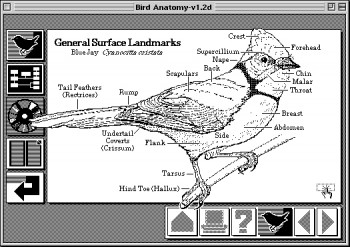Hypertext

What is hypertext?
The main difference between the Internet and the World Wide Web lies in the Web’s use of hypertext.
A Web link is hypertext, weaving hypertext documents (web pages) together, and making the user able to follow associative connections via clicking on those links.
The first hypertext-like system was hypothesized by Vannevar Bush, an inventor and engineer of World War II-era America. In his landmark essay "As We May Think," he proposed a system called a memex, able to store and retrieve information based not on traditional linear sorting but by an associative system that would echo the pathways of the human mind. Bush's depiction of this hypertext system as one to supplement and enlarge human knowledge and information storage was the predecessor to all practical hypertext systems, including the World Wide Web.
Hypertext was further developed by Stanford scientist Douglas Englebart, and demonstrated in his famous 1968 Mother Of All Demos. Not only was this the first practical demonstrated use of hypertext, but also of a computer mouse, GUI, computer windows, real-time collaboration, video-conferencing, and many more technologies that would come to be commonplace.
Further hypertext systems were put into practice in the 80s. In 1987, Apple began shipping the HyperCard program with its new Macintosh computers. The program, which used the simple-language HyperTalk script to allow users to create and navigate hypertext programs, called "stacks," popularized hypertext systems among consumers and primed them for the arrival of the World Wide Web in the early 90s.
There were originally many different competing types of hypertext applications, some utilizing the Internet and some not, and all very different in their usage of the same basic principles of interlinked information. For example, HyperCard did not use network protocols to access information like the Web. The Web did not allow for the continuous updating of its pages over a distributed database like HyperCard.
In the end, the World Wide Web won out, and is now fully synonymous with hypertext usage. The building bones of the Web are made from HTML - HyperText Markup Language.